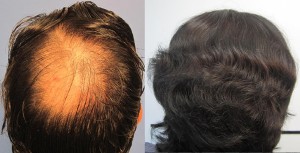Follicular Unit Grafting
The goal of hair transplantation is to create a natural appearance, one that mimics natural hair growth both in terms of numbers and pattern. The evolution of hair transplant techniques have been progressing toward this goal from the beginning of plug grafts to micrografts and minigrafts and to the follicular unit graft that contains hair exactly as it grows in the scalp.
1–4 Follicular unit grafting has made the more “surgically oriented” techniques obsolete, including scalp flaps, bald scalp reductions, and tissue expansion surgery except when used for scalp reconstruction for scarring.
5. In follicular unit hair grafting, each graft contains a follicular unit, which is the natural bundling of one to three and sometimes four hairs, surrounded by a fine adventitial sheath.
6. First described in the early 1990s, follicular unit grafting involves the dissection of each individual graft from a single donor strip under microscopic visualization to permit the careful removal of surrounding non–hairbearing skin.
7. These tiny grafts are then transplanted into the scalp into incisions that measure 0.5 to 0.8 mm in size. Typical procedures include from 1,800 to 3,500 grafts, with a mean of 2,500 grafts, but can include as many as 4,000 or more. To dissect and then place thousands of grafts in a 6- to 8-hour procedure, most surgeons employ a team of 4 to 10 assistants.

